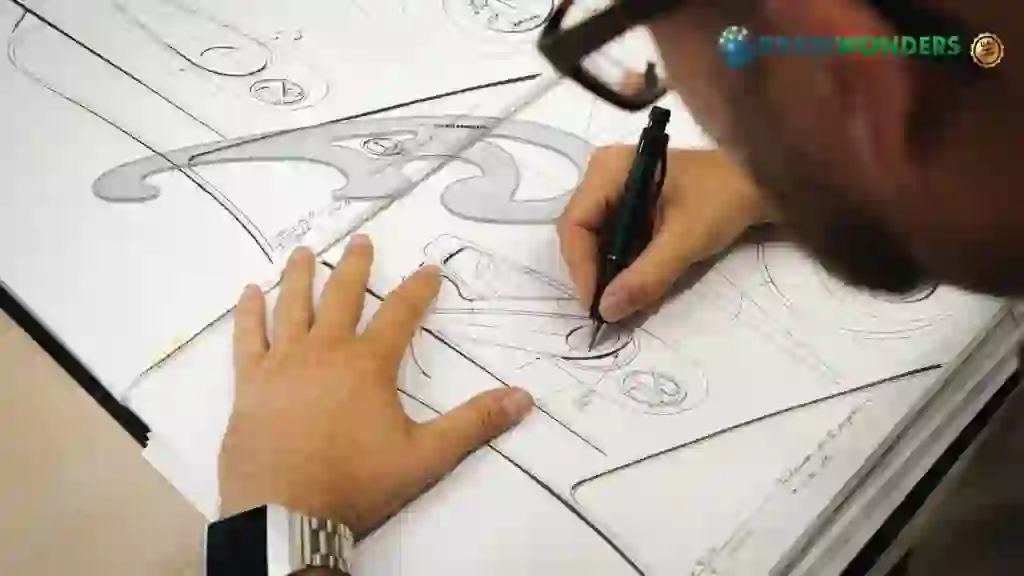How to become an Instructional Designer
Overview, Courses, Exam, Colleges, Pathways, Salary

Overview
Who is Instructional Designer ?
An instructional designer is an education professional specializing in developing effective instructional materials and learning experiences. They combine their pedagogy, instructional theories, and technology expertise to create engaging and interactive learning materials. Instructional designers work closely with subject matter experts, educators, and other stakeholders to analyze learning needs, define learning objectives, and design instructional strategies. They employ various instructional design models and methodologies to structure content, develop assessments, and incorporate multimedia elements. Instructional designers may also utilize educational technologies and learning management systems to deliver and track learning outcomes. They aim to create well-designed, learner-centered experiences promoting effective learning and knowledge retention.
Typical day at work
What does Instructional Designer do?
- Needs Analysis: Instructional designers work closely with stakeholders to determine the learning needs and goals of the target audience. They conduct thorough analyses to identify gaps and define clear learning objectives.
- Curriculum Design: Instructional designers collaborate with subject matter experts and educators to structure the curriculum. They organize and sequence the content, ensuring it aligns with the learning objectives and is engaging for the learners.
- Instructional Strategies: They select appropriate instructional strategies and methodologies based on the learning objectives and target audience. This may involve choosing interactive activities, simulations, case studies, or other methods to facilitate effective learning.
- Content Development: Instructional designers create or coordinate the development of instructional materials such as presentations, e-learning modules, videos, and interactive multimedia elements. They ensure the content is engaging and interactive and supports the learning objectives.
- Assessment Design: Instructional designers design assessments, including quizzes, exams, and projects, to evaluate learners' understanding and progress. They align the estimates with the learning objectives and develop rubrics or guidelines for scoring.
- Technology Integration: They leverage educational technologies and learning management systems to deliver and track learning experiences. Instructional designers incorporate interactive features, multimedia elements, and online collaboration tools to enhance learner engagement and interactivity.
- Evaluation and Revision: Instructional designers assess the effectiveness of the instructional materials and learning experiences through formative and summative assessments. They gather feedback from learners and stakeholders and use it to make improvements and revisions for continuous enhancement.
- Collaboration and Communication: Instructional designers collaborate with subject matter experts, educators, multimedia specialists, and other stakeholders throughout the design and development process. They communicate effectively to ensure a shared understanding and successful implementation of the instructional materials.
- Educational Research: Instructional designers stay updated with current research, pedagogical trends, and best practices in instructional design. They incorporate evidence-based approaches and utilize research to inform their design decisions.
Abilities and Aptitude needed
What are the skills, abilities & aptitude needed to become Instructional Designer?
- Knowledge of Instructional Design: Instructional designers should understand instructional design models, principles, and methodologies. This includes knowledge of adult learning theories, instructional strategies, and assessment techniques.
- Creativity and Design Skills: They should possess creativity and design skills to develop engaging and visually appealing instructional materials. This involves selecting appropriate multimedia elements, designing interactive activities, and structuring content in a user-friendly and visually appealing manner.
- Technological Proficiency: Proficiency in educational technology tools and learning management systems is essential. Instructional designers should be comfortable using authoring tools, multimedia software, and learning management systems to create and deliver instructional materials.
- Communication and Collaboration: Strong communication and collaboration skills are crucial. Instructional designers must effectively communicate with subject matter experts, educators, and other stakeholders to gather information, clarify requirements, and work collaboratively on designing and developing instructional materials.
- Analytical and Problem-Solving Skills: Instructional designers should possess strong analytical and problem-solving skills to identify learning needs, define clear objectives, and address challenges in designing effective instructional materials. They should be able to evaluate content and assessments for alignment with learning objectives critically.
- Project Management: Effective project management skills are essential for instructional designers. They need to manage multiple projects simultaneously, set priorities, meet deadlines, and coordinate with various team members and stakeholders.
- Adaptability and Continuous Learning: The field of instructional design is continuously evolving, so instructional designers should be adaptable and open to learning new tools and technologies. They should stay updated with the latest trends, research, and best practices in instructional design.
- Attention to Detail: Instructional designers should pay close attention to detail to ensure accuracy and quality in their work. They must review and proofread instructional materials to maintain consistency and eliminate errors.
- Evaluation and Assessment: Instructional designers should possess skills in designing assessments that measure learning outcomes effectively. They should be able to create clear and valid assessment instruments, such as quizzes, exams, and rubrics.
- Instructional Writing: Strong writing skills are crucial for designers to create clear and concise instructional content. They should be able to convey complex concepts and understandably.
Salary
Salary for Instructional Designer?
The salary of An Instructional Designer is as follows :
- Minimum Monthly Salary: Entry-level Instructional Designers or those in junior positions can expect a monthly salary ranging from INR 25,000 to INR 50,000. This salary range is typical for individuals starting their careers in instructional design.
- Maximum Monthly Salary: Experienced and highly skilled Instructional Designers, especially those working with well-established educational institutions or specializing in designing complex e-learning modules, have the potential to earn a monthly salary ranging from INR 1,20,000 to INR 2,50,000 or even more.
- Annual Salary: The annual salary of an Instructional Designer can vary significantly, ranging from INR 3,00,000 to several lakhs or more. This range is influenced by factors such as years of experience, proficiency in instructional design methodologies, and the ability to create engaging and effective learning materials.
- Highest Position and Scope: The pinnacle of achievement for Instructional Designers often comes when they attain senior design positions, lead instructional design teams, or become subject matter experts in specific educational domains. Accomplished Instructional Designers with a deep understanding of learning theories, strong creativity, and a proven record of designing impactful learning experiences can command significant recognition and compensation. The scope for Instructional Designers is promising, driven by the continuous demand for high-quality online education and training materials. As technology transforms the way people learn, organizations seek to provide effective remote training, and educational institutions adopt e-learning platforms, Instructional Designers play a crucial role in creating engaging and interactive content that enhances learning outcomes and contributes to the success of educational and training initiatives.
Pathways
How to become an Instructional Designer?
Entrance Exam
Entrance Exam for Instructional Designer ?
Courses
Which course I can pursue?
Best Colleges
Which are the best colleges to attend to become an Instructional Designer?
Industries
Which Industries are open for Instructional Designer?
- Education: Educational institutions, such as schools, colleges, and universities, often have instructional designers on staff to support curriculum development, create online courses, and enhance teaching and learning strategies.
- Corporate Training: Many companies and organisations hire instructional designers to develop employee training programs. This can involve creating e-learning modules, designing on-the-job training materials, and implementing blended learning approaches.
- Healthcare: The healthcare industry often requires instructional designers to develop training programs for healthcare professionals, patients, and the general public. This includes creating instructional materials on medical procedures, patient education, and healthcare technology.
- Government and Nonprofit: Government agencies, non-governmental organisations (NGOs), and nonprofits may employ instructional designers to develop educational resources, training programs, and public awareness campaigns.
- Technology and Software: Instructional designers are in demand in the technology and software industry to create user guides, online tutorials, and training materials for software applications, digital platforms, and technical products.
- Professional Development: Professional development organisations and consulting firms often hire instructional designers to develop training programs and resources for various industries, including leadership development, sales training, and workplace skills enhancement.
- E-Learning and EdTech: Companies specialising in e-learning and educational technology platforms require instructional designers to develop engaging and interactive online courses, virtual simulations, and mobile learning applications.
- Publishing: Educational publishers and digital content providers hire instructional designers to create instructional materials, textbooks, interactive modules, and educational content for online platforms.
internship
Are there internships available for Instructional Designer?
Internships for instructional designers are available in various sectors. Many educational institutions, including schools, colleges, and universities, offer internships or assistantships that allow aspiring instructional designers to gain practical experience in curriculum development, instructional design, and technology integration. Additionally, instructional design firms, e-learning companies, and educational technology companies may offer internships to interested individuals. Nonprofit organisations focused on education, and research may also provide internship opportunities related to instructional design. It is recommended to explore internship listings on job portals, university career services, and the websites of relevant organisations to discover available internships for instructional designers.
Career outlook
What does the future look like for Instructional Designer?
The future for instructional designers is promising. They will continue to leverage emerging technologies, such as virtual reality and artificial intelligence, to create immersive and personalised learning experiences. There will be an increased focus on adaptive and microlearning approaches and data-driven instructional design. Instructional designers will be vital in designing accessible and inclusive learning materials. Collaboration and communication skills will be essential for working with diverse teams and stakeholders. Overall, instructional designers will contribute to the dynamic and evolving landscape of education, ensuring engaging and effective learning experiences for learners.






